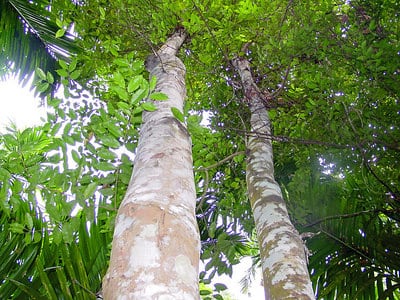Bronwen Evans is a New Zealand native who runs the Faasai Spa and Resort situated near Chantaburi in Southeast Thailand. The resort produces its own range of cosmetic products and massage oils made from locally sourced ingredients.
Indeed, most of the extracts are cultivated on the Faasai property, which also includes a 10 acre permaculure farm where a wide range of food, herb and medicinal crops are cultivated.
Agarwood oil found in the trunk of the tree
Amongst these crops, Evans takes great pride in the 1,000 Agarwood seedlings that have been planted on the land, which could eventually be harvested for the precious Agarwood oil found in the trunk of the tree.
"Originally we intended to harvest them for profit - theoretically they can be harvested after six years - although still very immature compared with a mature tree in the wild," said Evans.

Evans went on to explain that the trees have now become an integral part of the property and are extremely rare, making it difficult to go through with the harvesting process, which involves cutting the trees down to extract it from the trunk and roots.
The likelihood is that just a few of the trees will be harvested in the coming years, a decision that was brought about both because of the pervasive sweet scent that is released from the tree, together with the fact that the leaves and fruit can still be harvested for medicinal purposes.
"We planted the trees quite close together at the plantation and so they are growing tall and thin so will will however selectively harvest some of the trees to thin them out, probably within the next two years. Now they are about 8 years old and around 5 metres tall," Evans explained.
Agarwood only grows in a few countries
As well as the rarity of the tree, which is actually listed as an endangered species that only grows in a very few areas in Southeast Asia and China, the fact that they are best harvested after 80 years of cultivation and are often poached are the main reasons why the oil is in such short supply and so expensive.
"The oil is highly sought after, especially the top grade oil from wild trees which is more expensive than gold, making it the most expensive essential oil in the world," Evans explained.
"Perhaps reflected in the price tag is the fact that it is extremely penetrating - a few drops can perfume a room. It is also pervasive - a couple of drops on my wrist have lasted until the next day even after showering."

Evans went on to explain the harvesting process, which is complex and drawn out. Commercial growers apply fertiliser and water to speed up the growth, while the harvesting of the oil involves drilling a lot of holes horizontally around the trunk and then spraying with something to encourage the fungus.
Oil extraction process relies on fungus
"The oil is produced from a black resin that occurs in response to a fungal attack. Although some oil can be produced from the wood it has a different character," Evans said.
Evans says that when the Agarwood oil is harvested, she also plans to include it in the range of cosmetic products at the spa, stressing the fact that the fragrance from the oil is perfect for skin care products.
"The oil is also used as an anti-inflamatory, anti-microbial, healing of wounds, detoxifying. It is good for skin as is said to improve skin complexion, pain relief and itching," said Evans.
"Given the price it would probably be best for spa products, luxury skin creams. It would also be ideal for natural non-chemical products because of its ant- microbial properties."
